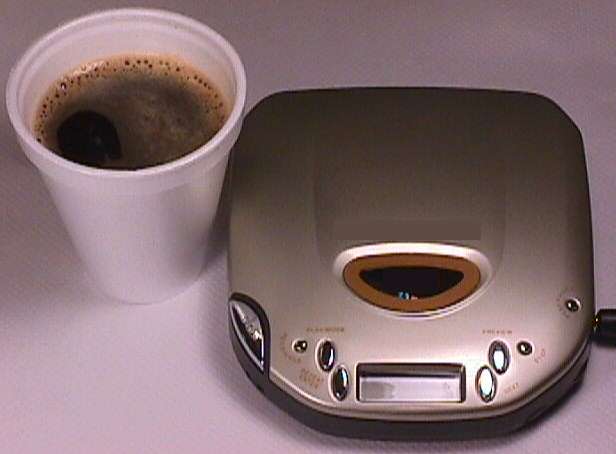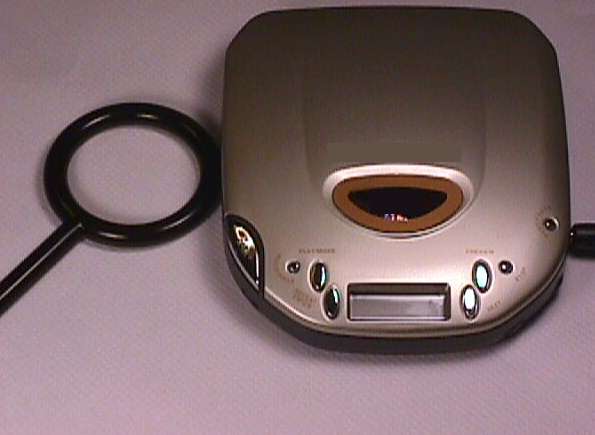Hidden Threats to Electronic Equipment

Figure 1. Visible and Hidden Threats to a CD Player

Address: P. O. Box 1457, Los Gatos,
CA 95031
TEL:
800-323-3956/408-356-4186
FAX:
408-358-3799
Mobile: 408-858-4528
URL:
www.dsmith.org
Email: doug@dsmith.org

Figure 1. Visible and Hidden Threats to a CD Player
There are both visible and hidden threats to the CD player in Figure 1. Aside from the possibility of a liquid spill, the styrofoam cup may be holding a significant electrostatic charge. This charge can cause hidden internal sparking inside nearby electronic equipment. Non-conducting enclosures, such as a plastic case, and conductive elements in the equipment that are insulated from each other may result in an environment where such internal sparking can happen. The resulting internal ESD (electrostatic discharge) can cause EMI (electromagnetic interference) resulting in equipment malfunction for some cases.
Consider the following hypothetical case: A small handheld instrument with a plastic case has an internal metal mounting screw securing one corner of a circuit board. The screw is anchored into the plastic and the screw head is a fraction of a millimeter from a path on the board. The screw is insulated from other conductors in the instrument. Now a static charge is placed near the instrument in the vicinity of the metal screw. This could be a cup setting next to the instrument on the cable, or a charge on the surface of the instrument generated by the instrument rubbing on clothing, or any number of other possible sources. Now assume the static charge is negative. The proximity of this negative charge will repel electrons on the screw and possibly cause a spark from the screw to the circuit board. This happens because the external charged "induced" a charge on the screw. When the external charge is removed, a spark may jump again between the circuit board and the screw as the screw now has a net positive charge. The larger the surface area of the floating metal, the more charge is available to cause a spark, but even a small screw can cause equipment malfunction..
The problem is that the ESD event is hidden and the connection between the cup, or rubbing on clothing, and equipment problems may be difficult to make. One way to detect this type of problem is to place a magnetic pickup loop near the instrument and connect it to a fast scope. This arrangement will detect the electromagnetic radiation that is generated by and ESD event in the instrument. Figure 2 shows the placement of a loop near a CD player. A commercial shielded loop is shown, but an unshielded loop made from a piece of wire or a paperclip will do as well for this purpose.
An internal ESD event in equipment can induce volts into a nearby loop a few centimeters across when a source of electrostatic charge is brought near the equipment. Imagine what is happening in the internal circuitry!

Figure 2. Use of a Magnetic Loop to Sense Internal ESD Events in Equipment
An alternate way to detect induced internal ESD events in equipment is to use an ESD event detector placed near the equipment in question. To get information on one such commercially available detector by Credence Technologies, click here. ESD event detectors are a good, low cost way to troubleshoot this type of problem. In a pinch, an AM radio placed near the equipment and tuned to an empty frequency can be used. It will make a "pop" when an internal ESD event occurs, but you need an electrically and acoustically quiet environment to do this. Sometimes electrical noise from the equipment will render the radio ineffective for detecting ESD events by masking them.
Repeatable methods of testing equipment for susceptibility to induced internal ESD and design methods for immunity to these events are covered in my seminars. Click here for more information on upcoming seminars.
References to magnetic loop probes and their uses on this website include: